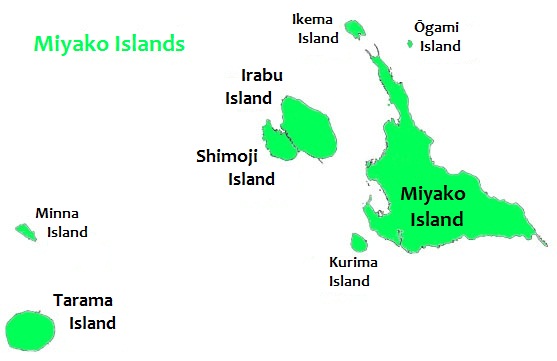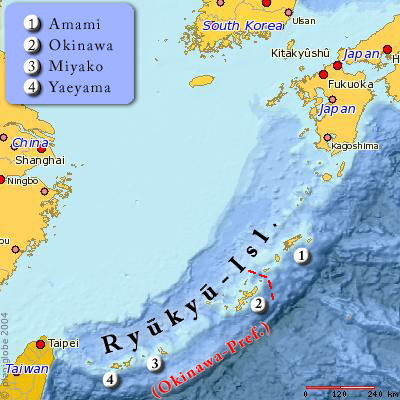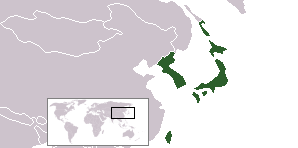|
Kurimajima
, ( Miyako: ''Ffima'') is one of the Miyako Islands of Okinawa Prefecture, Japan. It is connected to the southeastern end of the Yonaha Maehama beach on the Miyako-jima island via Kurima Bridge (), which was opened on 13 March 1995. Gallery Miyako kurima.JPG, Kurima-jima Kurimajima Miyakojima Okinawa Japan02n4500.jpg, Bridge from Kurima-jima to Miyako-jima is the largest and the most populous island among the Miyako Islands of Okinawa Prefecture, Japan. Miyako Island is administered as part of the City of Miyako Island, which includes not only Miyako Island, but also five other islands. Geogr ... Nagamahama.jpg, Beach on Kurima island See also References External links Miyakojima Website about Kurima-jima (Japanese) Miyako Islands Islands of Okinawa Prefecture {{Okinawa-geo-stub ... [...More Info...] [...Related Items...] OR: [Wikipedia] [Google] [Baidu] |
Miyako-jima
is the largest and the most populous island among the Miyako Islands of Okinawa Prefecture, Japan. Miyako Island is administered as part of the City of Miyako Island, which includes not only Miyako Island, but also five other islands. Geography Miyako Island lies approximately southwest of Okinawa Island. With an area of , Miyako is the fourth-largest island in Okinawa Prefecture. The island is triangular in shape and is composed of limestone. Miyako Island is subject to drought and is frequently struck by typhoons. Miyako Island is well known for its beauty, particularly the , a nationally designated Place of Scenic Beauty at the southeasternmost point of Miyako Island. It is considered by many as one of the most beautiful spots in Japan. Other notable locations include Yonaha Maehama beach, Sunayama beach, Painagama Beach and the sights on Irabu-jima. There are three islands nearby which are connected by bridges to Miyako Island, Irabujima (as of early 2015), , and . ... [...More Info...] [...Related Items...] OR: [Wikipedia] [Google] [Baidu] |
Miyako Islands
The (also Miyako Jima group) are a group of islands in Okinawa Prefecture, Japan, belonging to the Ryukyu Islands. They are situated between Okinawa Island and the Yaeyama Islands. In the early 1870s, the population of the islands was estimated to number approximately 10,000. Miyako Island has 55,914 people. A bridge connects Miyako Island to Ikema Island, which has 801 people. Tarama village has 1,214 people, between the two islands of Minna and Tarama. Important Bird Area The islands have been recognised as an Important Bird Area (IBA) by BirdLife International because they support populations of the resident Ryukyu green pigeons, as well as migrating whimbrels. Inhabited islands * Miyakojima City ** ** ** ** ** ( ja) ** * Tarama Village ( Miyako District) ** ** ( ja) See also * Miyako people * Sakishima Islands *Miyakoan language The Miyakoan language ( ''Myākufutsu/Myākufutsї'' or ''Sumafutsu/Sїmafutsї'', ) is a diverse dialect cluster spoken in th ... [...More Info...] [...Related Items...] OR: [Wikipedia] [Google] [Baidu] |
Okinawa Prefecture
is the southernmost and westernmost prefecture of Japan. It consists of three main island groups—the Okinawa Islands, the Sakishima Islands, and the Daitō Islands—spread across a maritime zone approximately 1,000 kilometers east to west and 400 kilometers north to south. Despite a modest land area of 2,281 km² (880 sq mi), Okinawa’s territorial extent over surrounding seas makes its total area nearly half the combined size of Honshu, Shikoku, and Kyushu. Of its 160 Island, islands, 49 are inhabited. The largest and most populous island is Okinawa Island, which hosts the capital city, Naha, as well as major urban centers such as Okinawa (city), Okinawa, Uruma, and Urasoe, Okinawa, Urasoe. The prefecture has a subtropical climate, characterized by warm temperatures and high rainfall throughout the year. People from the Ryukyu Islands, Nansei Islands, including Okinawa Island, Okinawa, the Sakishima Islands, and parts of Kagoshima Prefecture, are often collectively referred ... [...More Info...] [...Related Items...] OR: [Wikipedia] [Google] [Baidu] |
Prefectures Of Japan
Japan is divided into 47 prefectures (, , ), which rank immediately below the national government and form the country's first level of jurisdiction and Administrative divisions of Japan, administrative division. They include 43 prefectures proper (, ''Prefectures of Japan#Ken, ken''), two Fu (administrative division), urban prefectures (, ''Prefectures of Japan#Fu, fu'': Osaka Prefecture, Osaka and Kyoto Prefecture, Kyoto), one regional prefecture (, ''Prefectures of Japan#Dō, dō'': Hokkaido, Hokkaidō) and one metropolis (, ''Prefectures of Japan#To, to'': Tokyo). In 1868, the Meiji Restoration, Meiji ''Fuhanken sanchisei'' administration created the first prefectures (urban ''fu'' and rural ''ken'') to replace the urban and rural administrators (''bugyō'', ''daikan'', etc.) in the Tenryō, parts of the country previously controlled directly by the shogunate and a few territories of rebels/shogunate loyalists who had not submitted to the new government such as Aizu domain, ... [...More Info...] [...Related Items...] OR: [Wikipedia] [Google] [Baidu] |
Ryukyuan People
The are a Japonic-speaking East Asian ethnic group indigenous to the Ryukyu Islands, which stretch from the island of Kyushu to the island of Taiwan. With Japan, most Ryukyuans live in the Okinawa Prefecture or Kagoshima Prefecture. They speak the Ryukyuan languages, one of the branches of the Japonic language family along with the Japanese language and its dialects. Ryukyuans are not a recognized minority group in Japan, as Japanese authorities consider them a subgroup of the Japanese people, akin to the Yamato people. Although officially unrecognized, Ryukyuans constitute the largest ethnolinguistic minority group in Japan, with more than 1.4 million living in the Okinawa Prefecture alone. Ryukyuans inhabit the Amami Islands of Kagoshima Prefecture as well, and have contributed to a considerable Ryukyuan diaspora. Ryukyuans have a distinct culture with some matriarchal elements, an indigenous religion and a cuisine where rice was introduced fairly late (12th century ... [...More Info...] [...Related Items...] OR: [Wikipedia] [Google] [Baidu] |
Japanese People
are an East Asian ethnic group native to the Japanese archipelago. Japanese people constitute 97.4% of the population of the country of Japan. Worldwide, approximately 125 million people are of Japanese descent, making them list of contemporary ethnic groups, one of the largest ethnic groups. Approximately 120.8 million Japanese people are residents of Japan, and there are approximately 4 million members of the Japanese diaspora, known as . In some contexts, the term "Japanese people" may be used to refer specifically to the Yamato people, who are primarily from the historically principal islands of Honshu, Kyushu and Shikoku and constitute by far the largest group. In other contexts, the term may include other groups native to the Japanese archipelago, including Ryukyuan people, who share connections with the Yamato but are often regarded as distinct, and Ainu people. In recent decades, there has also been an increase in the number of people with both Japanese and non-Japanes ... [...More Info...] [...Related Items...] OR: [Wikipedia] [Google] [Baidu] |
Miyakoan Language
The Miyakoan language ( ''Myākufutsu/Myākufutsї'' or ''Sumafutsu/Sїmafutsї'', ) is a diverse dialect cluster spoken in the Miyako Islands, located southwest of Okinawa. The combined population of the islands is about 52,000 (as of 2011). Miyakoan is a Southern Ryukyuan language, most closely related to Yaeyama. The number of competent native speakers is not known; as a consequence of Japanese language policy which refers to the language as the , reflected in the education system, people below the age of 60 tend to not use the language except in songs and rituals, and the younger generation mostly uses Japanese as their first language. Miyakoan is notable among the Japonic languages in that it allows non-nasal syllable-final consonants, something not found in most Japonic languages. Dialects The most divergent dialect is Tarama, spoken on Tarama Island, the farthest island away. The other dialects cluster as Ikema– Irabu and Central Miyako. Given the low degree ... [...More Info...] [...Related Items...] OR: [Wikipedia] [Google] [Baidu] |
Japan
Japan is an island country in East Asia. Located in the Pacific Ocean off the northeast coast of the Asia, Asian mainland, it is bordered on the west by the Sea of Japan and extends from the Sea of Okhotsk in the north to the East China Sea in the south. The Japanese archipelago consists of four major islands—Hokkaido, Honshu, Shikoku, and Kyushu—and List of islands of Japan, thousands of smaller islands, covering . Japan has a population of over 123 million as of 2025, making it the List of countries and dependencies by population, eleventh-most populous country. The capital of Japan and List of cities in Japan, its largest city is Tokyo; the Greater Tokyo Area is the List of largest cities, largest metropolitan area in the world, with more than 37 million inhabitants as of 2024. Japan is divided into 47 Prefectures of Japan, administrative prefectures and List of regions of Japan, eight traditional regions. About three-quarters of Geography of Japan, the countr ... [...More Info...] [...Related Items...] OR: [Wikipedia] [Google] [Baidu] |
Yonaha Maehama
is a popular bathing beach on Miyakojima Island in Miyakojima City, Okinawa Prefecture in Japan. This seven kilometer white sandy beach is at the southwestern tip of Miyako Island. Locals refer to it simply as "Maehama" (Maipama, Maibama), but in recent years it is often called Maehama Beach, with the English loan word added. In Miyako, "mai" means not only "front" but also "south", so the named Maehama may have been chosen because it is located in front and south of the island's Yonaha district. Kurima Island is located opposite this beach, and the Kurima Ohashi Bridge connects the southeastern end of the beach to Kurima Island. On the slightly northwestern side of that bridge is Maehama Port, where boats used to arrive and depart from before the bridge was built. In recent years, erosion of this beach has been progressing, and there are concerns about its impact on tourism. In particular, some typhoons in 2018 caused extensive erosion and a series of cliffs. Facilities The ... [...More Info...] [...Related Items...] OR: [Wikipedia] [Google] [Baidu] |



